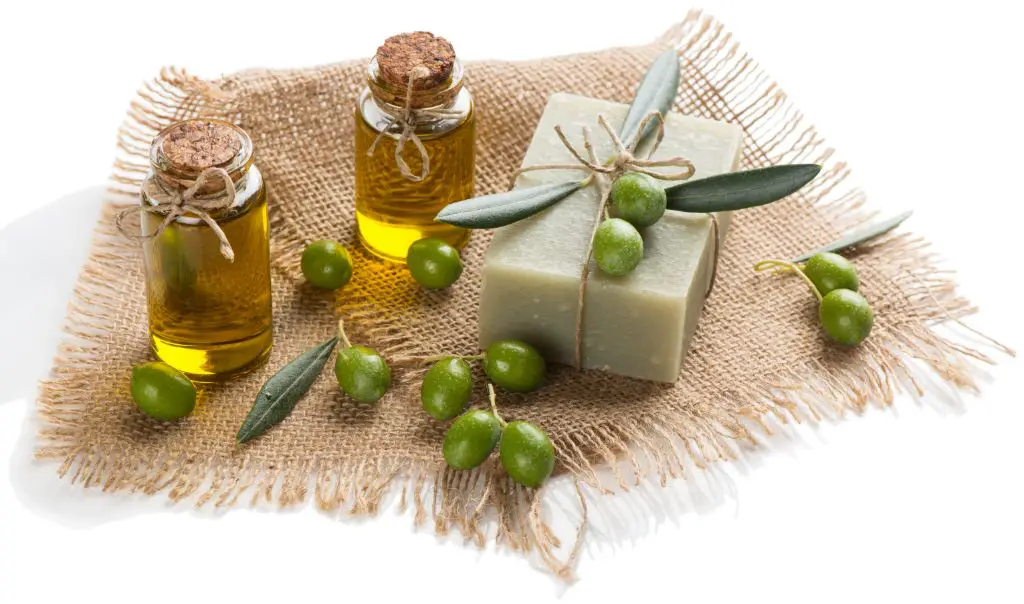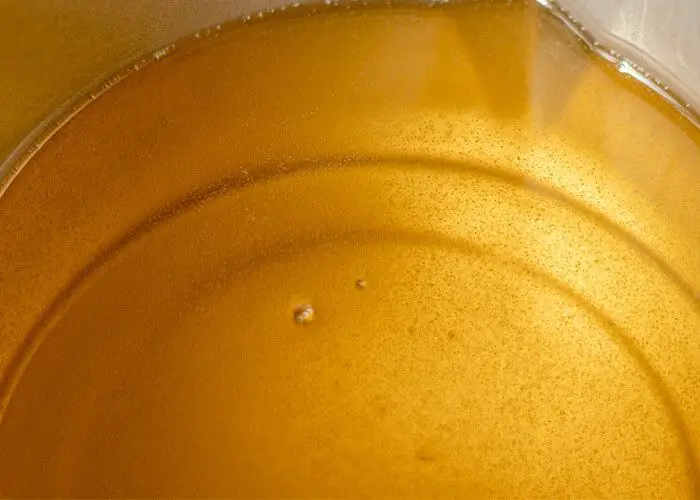Is Olive Oil Soap The Same As Castile Soap?
Olive oil soap and Castile soap are two types of soaps that are commonly confused as being the same product. However, while they share some similarities and overlap, they are not identical.
Castile soap originated in the Castile region of Spain and is made primarily from olive oil. True Castile soap will contain 100% olive oil. It is a hard bar soap that produces a very moisturizing lather. Castile soap is named after the Castile region and must be made in that region to be considered true Castile soap.
Olive oil soap is similar in that it contains olive oil as a main ingredient. However, it may also contain other oils as well like coconut, palm, or almond oil. The percentage of olive oil can vary widely in olive oil soap. It is a general term for any soap that contains olive oil, not a specific soap recipe like Castile. Olive oil soap can be made anywhere in the world, not just the Castile region.
So in summary, all true Castile soap is olive oil soap, but not all olive oil soap is Castile soap. The term Castile refers to a specific all-olive oil soap recipe produced in the Castile region of Spain. Olive oil soap is a more general term for soap containing olive oil as an ingredient.
Origins
Olive oil soap has a long history originating in the Mediterranean region. The Phoenicians were among the first to produce olive oil soap, as early as the 8th century BCE. The city of Saida (Sidon) in present-day Lebanon became known for its high-quality olive oil soap production and export. Olive oil was abundant in the region and used as the main ingredient in these soaps. According to some sources, by the 12th century, Sidon was exporting olive oil soap to the western world. Olive oil soap production thrived given the Mediterranean climate and ready availability of olive oils. Traditional techniques and recipes were passed down through generations in places like Syria, Lebanon, Greece, Italy and Spain.
The old city section of Sidon still has soap production facilities and museums dedicated to the history of olive oil soap in the region (https://www.lebanoninapicture.com/pictures/a-casa-que-abriga-o-museu-do-sab%C3%A3o-em-sidon-remonta-ao-). Olive oil soap continues to be produced in the Mediterranean using centuries-old techniques, even as modern manufacturing methods have spread.
Origins
The origins of Castile soap can be traced back thousands of years to the Levant region, where Aleppo soap makers used olive oil and laurel oil to produce hard soaps (Castile soap – Wikipedia). Castile soap gets its name from the Castile region of Spain, where this olive oil-based soap originated. According to the History of Castile Soap, olive oil soap production started in the Mediterranean area and spread with the arrival of Muslim soap makers to Spain in the 8th century. The Castile region of Spain was ideal for olive growth and became a major production area for olive oil and olive oil soap. Traditional Castile soap was made purely from olive oil rather than animal fats.
Ingredients
The main ingredients in olive oil soap are:
- Olive oil – This is the key ingredient that gives olive oil soap its gentle, moisturizing properties. Olive oil is rich in vitamins A, D, E, K, and polyphenols that are beneficial for the skin. Cold pressed or extra virgin olive oil is commonly used. Olive oil comprises anywhere from 50-100% of the oils in olive oil soap recipes.
- Water – Purified or distilled water is used to create the lye solution. The amount varies based on the oils used.
- Lye – Also called sodium hydroxide, lye is used to initiate saponification and turn the oils into soap. No lye remains after saponification. Lye is necessary to make olive oil soap.
- Other oils – Other vegetable oils like coconut, palm, or castor may be added in smaller amounts. This affects the bar’s lather and hardness.
- Essential oils or fragrances – These natural ingredients provide scent to the soap. Many olive oil soaps use Mediterranean fragrances like lavender.
Olive oil is the key moisturizing ingredient in true olive oil soaps. The percent of olive oil, other oils, water, and lye varies between recipes and manufacturers. But olive oil makes up the majority of oils.
Ingredients
The main ingredient in traditional Castile soap is olive oil. According to Aromatics.com, Castile soap is made from “saponified organic coconut, olive and jojoba oils, rosemary extract, and organic aloe vera.”
Castile soap gets its name from the Castile region in Spain, where olive oil-based soaps originated. While modern versions may contain other vegetable oils, traditional Castile soap recipes use 100% olive oil.
Olive oil gives Castile soap its signature gentle, moisturizing properties. The oleic acid in olive oil creates a mild, creamy lather that doesn’t strip skin of natural oils.
Other vegetable oils like coconut oil may be added to adjust the soap’s lather and hardness. But the olive oil is responsible for making Castile soap so versatile and skin-nourishing.
Manufacturing Process
Olive oil soap is made through a process called saponification, which is the chemical reaction between an oil or fat (like olive oil) and a strong alkali like sodium hydroxide or potassium hydroxide. This process turns the oils into soap.
To make olive oil soap, the olive oil is mixed with lye and water and heated until saponification occurs. The mixture goes through various stages, starting as a liquid and then becoming more solid as saponification progresses and the soap forms. Typically, the soap will go through a gel phase where it becomes smooth and thick like petroleum jelly before hardening into a solid bar.
Cold process olive oil soap making allows the soap to set and harden at room temperature over 4-6 weeks. The soap can also be made through a hot process method, where the soap mixture is cooked in a slow cooker or crock pot to speed up saponification. Extra virgin olive oil is commonly used to make olive oil soap due to its rich fatty acids and skin benefits.

Once the olive oil soap hardens completely, it can be cut into bars. Artisan olive oil soap makers often decorate the bars with botanicals or clay for exfoliation. The soap bars are left to cure for 4-6 weeks before use, allowing excess water to evaporate so the bars become milder and last longer.
Compared to commercial soap making, artisan olive oil soap undergoes minimal processing with no chemicals added. The end result is a gentler, traditional olive oil soap.
Manufacturing Process
Castile soap is made through a process called saponification, which is a chemical reaction between oils/fats and a strong alkali like lye. Traditional recipes call for olive oil and lye. The oils and lye are combined and mixed until saponification occurs and they turn into soap. Castile soap recipes usually contain 100% olive oil or other vegetable oils like coconut or palm oils. Animal fats are not used. The mixture is cooked and stirred until it reaches the desired consistency. Then it is poured into molds and left to cure for several weeks before being cut into bars. This long curing time helps the soap crystals form properly. Unlike modern soap making, Castile soap is made through traditional methods without additives or chemicals. It only contains plant-based oils and lye.
Here are key steps in making Castile soap:
- Mix lye with water and allow to cool
- Slowly stir olive oil into the lye water mixture
- Blend until emulsification occurs and trace begins
- Add essential oils or other ingredients if desired
- Pour into molds and allow to sit for 24 hours to harden
- Unmold, cut into bars, and cure for 2-6 weeks
The traditional cold process method results in a gentle, natural soap that retains glycerin unlike commercial soaps. With all-natural plant-based ingredients, Castile soap has a simple purity unmatched by other soaps.
Properties
Olive oil soap has many beneficial properties that make it a popular choice for soap. Some key properties include:
Gentleness – Olive oil is very gentle and moisturizing for the skin. Olive oil soap creates a mild, creamy lather that cleans effectively while being gentle enough for sensitive skin types. It does not strip the skin of natural oils.
Moisturizing – The oleic acid in olive oil allows it to penetrate deep into the skin, providing excellent moisturizing benefits. Olive oil soap leaves skin feeling soft and smooth. It can help prevent dryness and irritation.
Low pH – Olive oil soap typically has a natural pH around 8-9, which is close to the normal pH of human skin. This helps maintain the skin’s protective acid mantle. Many commercial soaps have an excessively high pH that can disrupt skin health.
Antioxidant Content – Olive oil contains antioxidant compounds like polyphenols that can help protect the skin from environmental damage. These antioxidants remain present in olive oil soap.
Lather – While olive oil produces a creamier, more moisturizing lather than other soap oils, combining it with coconut oil helps boost bubbles. The lather will be ample but with a smooth glide.
Hardness – Olive oil is a softer oil, but modern olive oil soap recipes use other oils to create a nice hard bar with good longevity. The soap will last longer than all-olive oil recipes.
Cleansing Ability – Though gentle, olive oil soap still provides thorough cleansing of dirt, bacteria, and pollutants thanks to the combination of oils. It can be used for full body cleansing.
According to Fratelli Carli, their olive oil bar soap is neutral, dermatologically tested on sensitive skin types and suitable for full-body hygiene. It can be used daily for handwashing and bathing
(https://www.oliocarli.us/magazine/secrets-of-quality/olive-oil-soap-properties).
Properties
Castile soap is made from 100% olive oil, which gives it unique properties compared to other types of soap. Some key properties of Castile soap include:
Gentleness – The high olive oil content makes Castile soap very gentle and moisturizing for the skin. It does not strip the skin of natural oils like many other soaps.
Long-lasting – Castile soap lasts a very long time compared to other bar soaps, often taking 4-6 weeks to cure completely. A bar of Castile soap can last several months with regular use.
Versatility – Castile soap can not only be used for personal hygiene, but also household cleaning, as a shampoo, and more. It is a very versatile, eco-friendly product.
Biodegradable – Because it contains only natural ingredients, Castile soap is completely biodegradable and environmentally friendly.
Antibacterial – Research has shown that the fatty acids in olive oil have natural antimicrobial properties, making Castile soap a gentle but effective cleaner. (source)
The unique olive oil content gives Castile soap useful properties not found in many other soaps, making it a popular choice for natural skin and home care.
Conclusion
In summary, while olive oil soap and Castile soap share some similarities, there are key differences between the two. Castile soap is made from 100% olive oil and no other oils or fats. Olive oil soap, on the other hand, contains olive oil as the main ingredient but often includes other oils as well such as coconut, palm, or avocado oil.
Both soaps are gentle and moisturizing on the skin due to their high olive oil content. However, Castile soap has a higher cleansing ability compared to olive oil soap due to its 100% olive oil composition. It also produces a creamier, more moisturizing lather. Olive oil soap, with its blend of oils, can produce a richer, thicker, longer-lasting lather.
The manufacturing process also differs slightly between the two. Castile soap bars must cure for several months before use. Olive oil soap has a shorter cure time. In terms of scent, Castile soap has an authentic light olive oil scent. Olive oil soap’s scent depends on any essential oils added.
So in summary, while the two share similarities due to olive oil being the key ingredient, Castile soap stands apart with its 100% olive oil content and purity.




